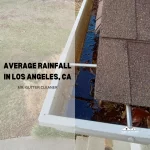Buried downspouts are essential for effective home maintenance, directing water away from the foundation to prevent structural damage. They are typically integrated into the landscape to minimize visual impact while maximizing functionality.
However, they are prone to certain issues that homeowners must understand and address.
Failure often results from material degradation, improper installation, or adverse weather conditions, leading to blockages, leaks, and potential damage to the home’s exterior and foundation.
Identifying signs of failure early is crucial, involving visible exterior changes or interior water damage.
Homeowners should perform regular inspections and cleanings to mitigate these problems and extend the lifespan of their downspouts.
When issues arise, understanding when to undertake DIY fixes or seek professional assistance is key to effective resolution.
Additionally, familiarizing oneself with local regulations and community standards ensures compliance and harmony. Embracing innovations and adhering to maintenance schedules will future-proof home downspouts, safeguarding the home’s integrity and value.
What Are Buried Downspouts?
Buried downspouts are essential components in home maintenance, designed to guide water away from the home’s foundation. These systems are typically extensions of traditional downspouts, which are directed underground to disperse water at a safe distance from the house. This method is preferred in home maintenance for its efficacy in preventing water damage and maintaining property aesthetics.
Understanding the Role of Downspouts in Home Maintenance
The primary function of downspouts is water management. Specifically, they direct rainwater from the roof and gutters away from the home’s foundation, which is crucial for structural integrity. Effective downspout systems prevent soil erosion, basement flooding, and damage to the home’s foundation. Regular maintenance and inspections ensure these systems perform optimally, safeguarding the home against common water-related issues.
Table Of Contents:
The Basics of Buried Downspout Installation
Installation of buried downspouts requires consideration of various factors including soil type, landscape, and climate. The process typically involves extending the downspout from the gutter, downward into a trench, and leading it away from the home. The end point, often a dry well or a specially designated area, ensures water disperses without causing damage. Proper installation, considering gradient and material, ensures longevity and functionality of the downspout system.
Why Do Buried Downspouts Fail?
Buried downspouts fail primarily due to material wear and tear and incorrect installation. Over time, downspouts can deteriorate from constant exposure to harsh weather and environmental conditions. Incorrect installation can lead to immediate or eventual system failure. Understanding these causes helps homeowners take preventative measures or seek timely repairs.
Identifying Common Material Wear and Tear
Materials degrade over time, affecting downspout integrity. Common signs of wear include rusting, cracking, and separation of joints. These issues are often exacerbated by fluctuating temperatures, moisture, and physical impact. Regular inspections can identify these problems early, preventing extensive damage and ensuring the longevity of the downspout system.
How Does Weather Affect Your Downspouts?
Weather plays a significant role in downspout deterioration. Heavy rains, freezing temperatures, and intense sunlight can all contribute to weakening materials. In colder climates, ice can form blockages, leading to cracks or bursts. Homeowners must consider local weather patterns when choosing materials and planning maintenance schedules.
The Impact of Poor Installation
Poor installation is a primary cause of downspout failure. Incorrectly installed downspouts can lead to immediate water mismanagement or gradual system damage. Common installation errors include improper slope, inadequate securing, and the use of incompatible materials. Professional installation and regular checks can mitigate these risks.
Signs of Improper Downspout Installation
Recognizing signs of improper installation can prevent major issues. These include water pooling around the foundation, visible gaps between sections, and unusual noises during rain. Early detection of these signs allows for quick corrective measures, ensuring the downspout system functions as intended.
What Are the Signs of Buried Downspout Problems?
Visible and structural indicators signal issues with buried downspouts. Homeowners must be vigilant for signs like water stains, soil erosion, or unexpected wet areas, which often suggest downspout malfunctions. Recognizing these symptoms early can prevent extensive damage to the home’s structure and landscape.
Visible Indicators on Your Home’s Exterior
Exterior signs include water pooling, soil erosion, and overflow. Water stains on siding or pooling at the downspout’s exit point are clear indications of blockages or leaks. Soil erosion near the foundation and over-saturated areas in the yard can also suggest improper water dispersion, pointing to potential downspout issues.
Symptoms in Your Home’s Interior and Foundation
Internal indicators encompass damp basements and cracks in the foundation. Excessive moisture in basements or crawl spaces often results from inadequate drainage, a sign that downspouts might not be functioning correctly. Foundation cracks or settling can also indicate long-term water damage, necessitating immediate attention to the home’s water drainage system. Identifying these signs early can save homeowners from costly repairs and maintain the structural integrity of their homes.
How to Diagnose Buried Downspout Issues?
Effective diagnosis of buried downspout issues begins with understanding the system’s design and common problem areas. Homeowners can identify many problems through visual inspection and simple tests. Recognizing signs early and accurately diagnosing the issue are key to maintaining the functionality and longevity of downspouts.
Tools and Techniques for Effective Diagnosis
Various tools and techniques aid in diagnosing downspout problems. Homeowners may use hoses to simulate rainfall and observe water flow, ensuring downspouts effectively divert water away from the foundation. Inspection cameras can check for blockages or damage within the system. Understanding the landscape and typical water flow paths also helps in identifying issues before they escalate.
When to Call a Professional?
Professional help is recommended when homeowners are unable to diagnose or solve the issue themselves. Persistent water pooling, visible damage to the downspout, or complex systems often require the expertise of a professional. They can provide a thorough assessment, identify underlying problems, and suggest effective solutions, ensuring the downspout system operates effectively and protects the home.
Solutions and Preventative Measures for Buried Downspout Problems
Effective solutions and preventative measures significantly reduce the risk of buried downspout problems. Addressing issues early and adhering to a maintenance schedule ensures long-term functionality and prevents costly repairs. Homeowners can take proactive steps to ensure their downspouts remain efficient and effective.
Regular Maintenance Tips
Consistent maintenance is key to preventing downspout problems. Homeowners should clean and inspect downspouts regularly to prevent blockages and identify early signs of wear or damage. Clearing debris, checking for proper water flow, and inspecting for any visible damage are essential tasks. Establishing a routine cleaning and inspection schedule contributes to the longevity of the downspout system.
Cleaning and Inspection Schedule
A semi-annual cleaning and inspection schedule is recommended. Ideally, inspections should occur in late spring and early fall, following significant seasonal changes that could impact the downspouts. After clearing debris, homeowners should check for proper water flow and signs of damage. Noting changes or irregularities can help identify issues before they become severe.
Repair or Replace: Making the Right Decision
Deciding whether to repair or replace downspouts depends on their condition and age. Minor issues like clogs or loose sections can often be repaired easily. However, if downspouts show extensive damage or are near the end of their lifespan, replacement might be more cost-effective. Professional assessment can guide this decision, ensuring the most effective solution is chosen.
DIY Repair Tips
For minor repairs, homeowners can often take a DIY approach. Clearing blockages, reattaching disconnected sections, and applying sealant to small leaks are tasks that can be done without professional help. However, safety and proper techniques are important to consider. If the repair is beyond the homeowner’s capability or involves significant risk, professional assistance is advised.
Choosing the Right Professional for Replacement
Selecting the right professional is crucial when replacement is necessary. Homeowners should seek experienced, licensed contractors with a track record of quality work. Obtaining multiple quotes, checking references, and reviewing warranties or guarantees can aid in choosing the best professional for the job. A reputable professional will ensure the new downspout system is installed correctly and efficiently, providing peace of mind and long-term protection for the home.
Navigating Legal and Community Considerations
Adhering to local regulations and community standards is crucial when installing or modifying buried downspouts. Homeowners must be aware of and comply with relevant laws to ensure their downspout system is legally sound and community-friendly. Understanding these guidelines helps avoid legal issues and maintains good relationships within the community.
Understanding Local Regulations on Downspout Installation
Local regulations may dictate specific requirements for downspout installation. These can include materials, placement, and where the water should be directed. Municipalities might have rules to prevent stormwater from affecting neighboring properties or public systems. Homeowners should consult local building codes and regulations to ensure compliance. In some cases, permits may be required before installation or modification.
Working with Homeowners Associations
Homeowners associations (HOAs) may have their own set of rules regarding downspouts. These rules can pertain to the aesthetics, type of materials used, or specific maintenance standards. Before installation or repairs, homeowners should review their HOA’s covenants, conditions, and restrictions (CC&Rs) to ensure their downspout plans are in alignment. Non-compliance can lead to fines or required changes, so clear understanding and adherence are important. Engaging with the HOA early in the planning process can facilitate smooth implementation and avoid future disputes.
Future-Proofing Your Home’s Downspouts
Future-proofing downspouts means adapting them to last longer and function more efficiently. As weather patterns change and new materials become available, homeowners can take proactive steps to ensure their downspout systems are resilient, effective, and up-to-date. This process involves both innovative materials and design approaches.
Innovations in Downspout Design and Materials
Technological advancements have introduced more durable and efficient materials for downspouts. These innovations might include improved plastics, metals resistant to rust and corrosion, or designs that are easier to clean and maintain. Additionally, incorporating features like leaf guards or integrating rainwater collection systems can enhance the functionality and environmental sustainability of downspouts.
Long-Term Benefits of Quality Downspout Maintenance
Investing in quality materials and regular maintenance brings long-term benefits. High-quality downspouts resist wear and tear, reducing the need for frequent repairs. Consistent maintenance ensures they continue to perform their vital role in home maintenance effectively. Together, these strategies extend the lifespan of the downspout system, improve home safety, and can even enhance property value. Adopting a forward-thinking approach to downspout maintenance means less worry and cost in the future, and a healthier, more resilient home.


